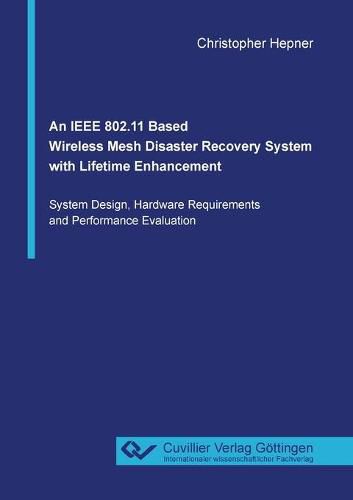Readings Newsletter
Become a Readings Member to make your shopping experience even easier.
Sign in or sign up for free!
You’re not far away from qualifying for FREE standard shipping within Australia
You’ve qualified for FREE standard shipping within Australia
The cart is loading…






This title is printed to order. This book may have been self-published. If so, we cannot guarantee the quality of the content. In the main most books will have gone through the editing process however some may not. We therefore suggest that you be aware of this before ordering this book. If in doubt check either the author or publisher’s details as we are unable to accept any returns unless they are faulty. Please contact us if you have any questions.
After the occurrence of a disaster (e. g. an earthquake or tsunami) one of the main needs for the rescue teams and volunteer helpers is a functional communication infrastructure even during the first hours. The disaster recovery system (DRS) which is proposed in this work is based on an IEEE 802.11s wireless mesh network which is set up by non-damaged, legacy, mesh capable and battery powered devices still available in the disaster region. Key considerations concerning the performance of a DRS are the required node density, the coverage that can be achieved by a given node density, scalability as well as the lifetime of the system. For lifetime of the system. For lifetime enhancement, which is a key challenge for the proposed DRS on battery powered devices, a distributed algorithm is proposed which enhances the lifetime of such a system by an approach which allows to shut down non-necessary nodes and to keep them for a later usage while still keeping network connectivity.
$9.00 standard shipping within Australia
FREE standard shipping within Australia for orders over $100.00
Express & International shipping calculated at checkout
This title is printed to order. This book may have been self-published. If so, we cannot guarantee the quality of the content. In the main most books will have gone through the editing process however some may not. We therefore suggest that you be aware of this before ordering this book. If in doubt check either the author or publisher’s details as we are unable to accept any returns unless they are faulty. Please contact us if you have any questions.
After the occurrence of a disaster (e. g. an earthquake or tsunami) one of the main needs for the rescue teams and volunteer helpers is a functional communication infrastructure even during the first hours. The disaster recovery system (DRS) which is proposed in this work is based on an IEEE 802.11s wireless mesh network which is set up by non-damaged, legacy, mesh capable and battery powered devices still available in the disaster region. Key considerations concerning the performance of a DRS are the required node density, the coverage that can be achieved by a given node density, scalability as well as the lifetime of the system. For lifetime of the system. For lifetime enhancement, which is a key challenge for the proposed DRS on battery powered devices, a distributed algorithm is proposed which enhances the lifetime of such a system by an approach which allows to shut down non-necessary nodes and to keep them for a later usage while still keeping network connectivity.